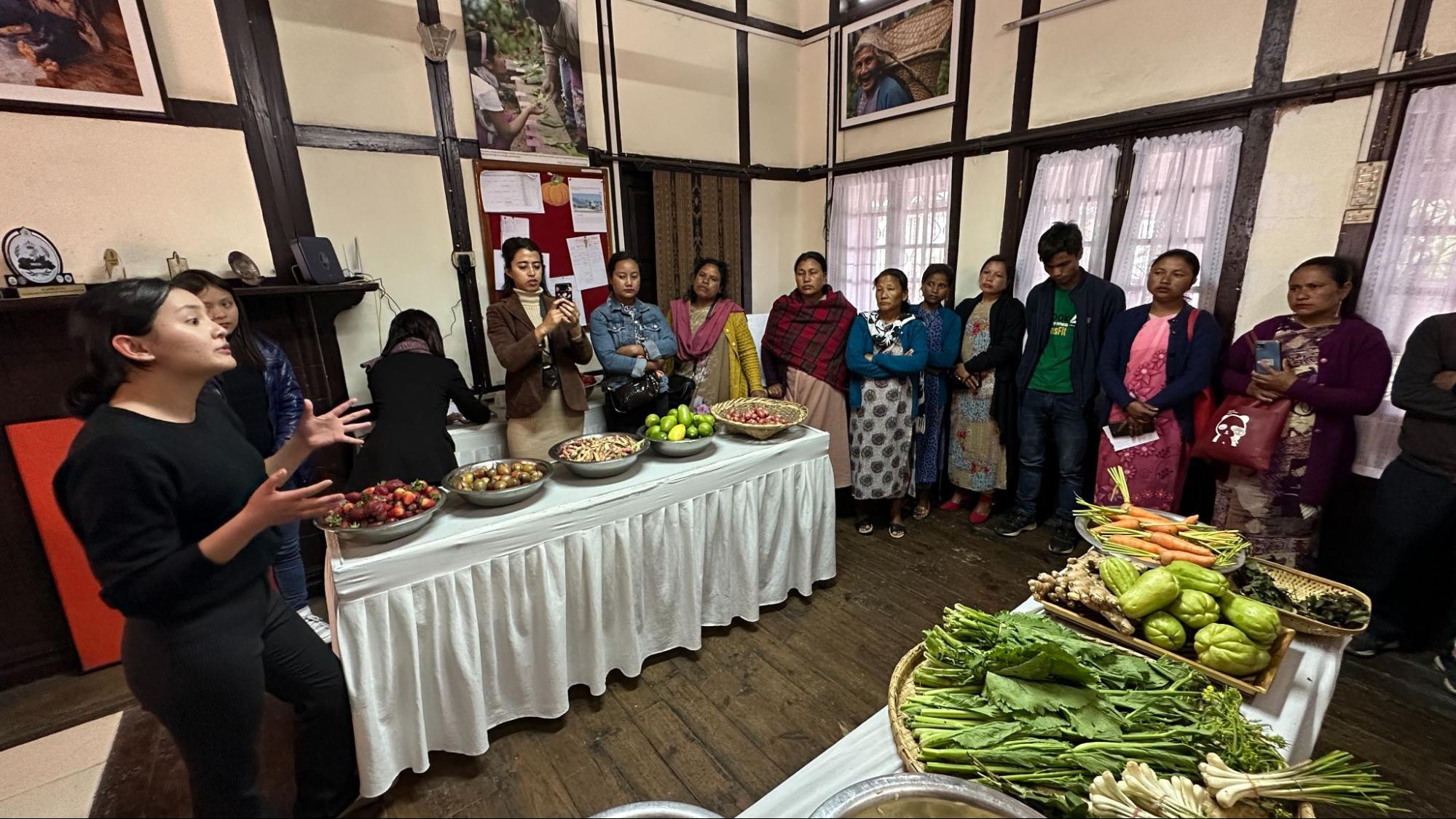Celebration of Millets with NESFAS, Shillong


On a cool day in March, chefs from different parts of Shillong and millet growers from all over Meghalaya were crouched over a large steel pot. In the pot, finger millet, mushroom, and piscot were boiling away, with steam—aromatic and earthy—escaping from the vessel.
This dish was one of the many featured on the menu for the Millet Meetup in Shillong, in collaboration with NESFAS (North East Slow Food and Agrobiodiversity Society) as a part of the Millet Revival Project with Rainmatter Foundation. NESFAS works towards a food system that champions agrobiodiversity and food sovereignty, and appreciates the value of traditional knowledge around food. The menu for the meetup was designed by local chefs from Shillong, indigenous millet or krai growers from the state, and ChefTZac, which allowed each dish to be a diverse coming together of traditional tastes and flavours, local ingredients, and modern ways of cooking.


(L) Mushroom, finger millet, and piscot soup served during the meetup was a favourite of the Meghalayan millet growers. (R) Millet farmers from around Meghalaya help out with the preparation of the millet meetup lunch.
The meetup spanned an entire day, with stakeholders from the Meghalayan agricultural landscape participating in discussions about the history of millets and its relevance for the future. However, preparations for this meetup started early the day before. Not only did we all come together to make the food that was to be served during the event, but to also have important conversations around millet production and consumption in the state. Why had millet varieties over the years dwindled from fields and plates in Meghalaya, and should we try to bring them back?
The first day began with a lunch by Mei-Ramew Cafe, a cafe run by Dial Muktieh and supported by NESFAS that offers traditional Meghalayan fare. The menu for the lunch featured a wholesome spread of dishes that used locally sourced ingredients and traditional cooking techniques.

Lunch from Mei-Ramew cafe.
Post lunch, local chefs Artet Kharsati, Ahmedaki Laloo, Naphisamanbha Mawroh, Benny Wankhar, Jemyleen Diengdoh, and Vanbilton Paul, indigenous krai farmers from over 11 communities across the state, and The Locavore team sat to share ideas and experiences, with members of the NESFAS team facilitating.
The interactions revealed that the millet landscape in Meghalaya is infinitely complex. Millet growers spoke of issues related to krai production, such as the difficulty in processing millets for sale, the lack of accessible and organised food systems and markets, depleting land allocation for krai production, and lack of interest among the current generation to consume millets. Many of them also expressed that the perception around krai, that it isn’t desirable to eat, discouraged many from eating it, let alone growing it.

Local chefs and indigenous millet farmers came together to discuss the challenges of growing, processing, and selling millets.
To tackle the challenges of demand and supply, the local chefs and the farmer community agreed to work together to create easy, tasty millet recipes using local ingredients that people in Meghalaya are familiar with.
Ashish Sharma, digital media lead at The Locavore expressed how moved he was upon witnessing the interaction, “It was amazing to see just how open everybody was. The chefs were so receptive to the challenges faced by growers, and the growers were open to understanding the value of millets.”
The rest of the day was spent coming up with creative dishes that highlight the different flavours and textures that krai can lend. The activity opened up the versatility of the grains for all stakeholders involved, as they learned from each other the potential of this food.
The result was a range of inspired dishes that celebrated Khasi cuisine and the start of thinking about millets in a different light for everybody present.


(L) farming communities brought homemade krai dishes with them, such as putharo krai (millet pancakes), ja krai (millet rice), cake, and sha krai (millet tea). (R) During a knowledge exchange workshop, Chef Benny took the gathering through the concept behind the menu, which involved reimagining beloved traditional fare with millets.


The chefs came up with recipes that feature local ingredients.
On the second day, these cooking experiments were served, among others, to an esteemed line-up of guests: Kong Amprareen (Agricultural Minister), Kong Bibiana (custodian farmer at NESFAS), Kong Patricia (Editor, The Shillong Times), Bah Nestar (Chairman, NESFAS), and Bah Phrang Roy (founder, NESFAS).
After the community meal, guests, participants, and organisers shared their layered experiences of millets in their many different engagements with the grain, as well as their wish to sustain them as sacred heritage crops, and the importance of working towards this collectively.


(L) The spread, spotlighting finger millet, was inspired by Khasi cuisine. (R) Menu curated by local chefs, krai farmers, and team Locavore.
Many of the millet growers expressed that this meetup felt significant and encouraging for their future with millets and left with renewed appreciation for their heritage grain and their histories with it. Our partner team of local chefs felt similarly.
“We’ve been working with millets for two days now, and it’s been one hell of an experience! It’s the first time that I’m working with an indigenous ingredient that has had such a strong cultural impact. Only now am I realising how versatile and enriching millets are—not just in the culinary sense, but also nutritionally. I hope, here on, that a lot of other chefs also think along the same lines, and try to highlight ingredients such as millets,” said Ben Wankhar, one of the five local chefs who participated in the event.
And that’s a hope The Locavore can’t help but share with him.

Guests and organisers alike shared a wish to sustain millets as heritage crops.
To know more about the experiences surrounding krai in Meghalaya, read this interview by Nidaphi Hynniewta, which was conducted during the meetup.
